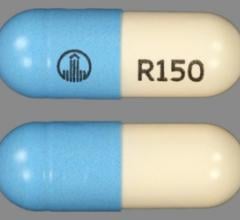November 24, 2015 – The U.S. Food and Drug Administration (FDA) approved Boehringer Ingelheim Pharmaceuticals’ dabigatran (Pradaxa) for the prophylaxis of deep venous thrombosis (DVT) and pulmonary embolism (PE) in patients who have undergone hip replacement surgery. There are an estimated 300,000 total hip replacement surgeries performed in the United States each year. Without preventive anticoagulant treatment, the incidence of DVT ranges from 40 to 60 percent for primary elective hip surgery patients.
“This milestone represents the fourth FDA-approved indication for Pradaxa in five years — a testament to the company’s continued leadership in the evolution of anticoagulation care for patients and clinicians,” said Sabine Luik, M.D., senior vice president, medicine and regulatory affairs, Boehringer Ingelheim. “Pradaxa has the longest real-world experience of any novel oral anticoagulant, and we are dedicated to ongoing research. Physicians and patients choosing PRADAXA may have added assurance knowing that it is the only novel oral anticoagulant with more than five years of use in clinical practice and a specific reversal agent.”
The FDA approval is based on the results of two randomized, double-blind, phase III trials in patients undergoing total hip replacement, RE-NOVATE and RE-NOVATE II. In RE-NOVATE, 3,494 patients were randomized to three groups receiving prophylactic treatment with one of two doses of dabigatran (220 mg or 150 mg) once daily or enoxaparin 40 mg once daily for 28 to 35 days. The first dabigatran group was given a dose of 110 mg on the day of surgery and 220 mg daily thereafter; the second dabigatran group received a dose of 75 mg on the day of surgery and 150 mg daily thereafter. In RE-NOVATE II, 2,055 patients were randomly assigned prophylactic treatment for 28 to 35 days with dabigatran 220 mg once daily or enoxaparin 40 mg once daily. Patients receiving dabigatran were treated with a dose of 110 mg on the day of surgery and 220 mg daily thereafter. The results of RE-NOVATE showed patients taking dabigatran 220 mg had a lower composite total of venous thrombo-embolism (VTE, which comprises DVT and PE) and all-cause death (6.0 percent) than those on enoxaparin 40 mg (6.7 percent). In RE-NOVATE II, the composite total of VTE and all-cause death occurred in 7.7 percent of patients in the PRADAXA group vs. 8.8 percent of patients in the enoxaparin group.
There were higher rates of major bleeding in RE-NOVATE (2%, 1.6%) and RE-NOVATE II (1.4%, 0.9%) with 220 mg vs. enoxaparin. In the two studies, the rate of major gastrointestinal bleeds in patients receiving dabigatran and enoxaparin was the same (0.1%) and for any gastrointestinal bleeds was 1.4% for dabigatran and 0.9% for enoxaparin. The most common adverse events in both studies were gastrointestinal disorders. Incidence was the same across the dabigatran and enoxaparin treatment groups (39.5%). Dyspepsia (including abdominal pain upper, abdominal pain, abdominal discomfort, and epigastric discomfort) occurred more frequently among patients receiving dabigatran (4.1%) compared to enoxaparin (3.8%). Gastritis-like symptoms (including gastritis, GERD, esophagitis, erosive gastritis and gastric hemorrhage) were less common in patients receiving dabigatran (0.6%) compared to enoxaparin (1.0%). Clinical MI was reported in two (0.1%) dabigatran patients and six (0.3%) enoxaparin patients.
Dabigatran was initially approved by the FDA in 2010 to reduce the risk of stroke and systemic embolism in patients with non-valvular atrial fibrillation (NVAF). In 2014, the FDA approved two additional indications for PRADAXA for the treatment of DVT and PE in patients who have been treated with a parenteral anticoagulant for five to 10 days, and to reduce the risk of recurrent DVT and PE in patients who have been previously treated.
For more information: www.us.boehringer-ingelheim.com


 August 28, 2023
August 28, 2023 








